Paine Field (KPAE) in Everett, WA is home to a variety of both modern and vintage aircraft. Though brand spanking new Boeing planes are built there and delivered to around the world, the vintage aircraft hopefully come to stay around for a while.
At the Historic Flight Foundation (HFF) there are some glorious classic aircraft that have been painstakingly restored and are much loved by not only their owner, but also the volunteers who look after them. One such recent arrival joining the collection is a beautifully restored Douglas DC-3, in Pan American Airways [PanAm] livery, that has a checkered past. I was recently invited to check out the aircraft and was able to learn a bit more about its history.
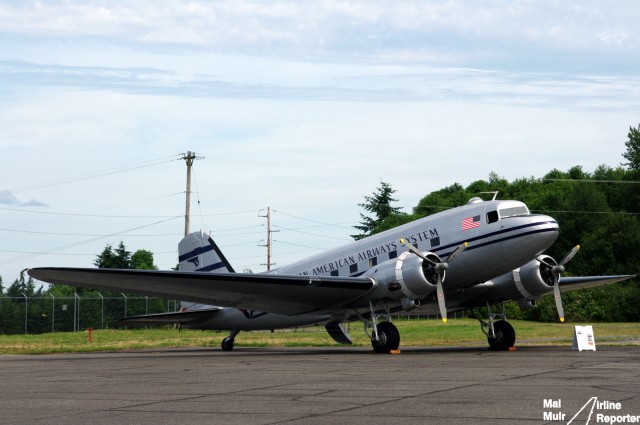
The Newest Aircraft to Grace the Historic Flight Foundation’s Ramp – Photo: Mal Muir | AirlineReporter.com
Although N877MG now lives out its life parked on the ramp at HFF, its history began 1200 miles away in Long Beach California when it was rolled out as a C-47B on the 31st of July 1944 and delivered to the China National Aviation Company (CNAC).
At the time, the CNAC was part owned by Pan American Airways but was also part owned by the Chinese government (still in existence today as the parent company to Air China). Destined to fly ’œThe Hump’ from the CNAC base in Calcutta India, over the Eastern Himalayas and into China. The aircraft was picked up in Miami by Pete Goutiere and began it’s long journey around the world.
Why did they choose the long way? Well it was war time, so that meant the would flying from Miami to Calcutta via Puerto Rico, Georgetown (Guyana), Belem (Brazil), Natal (Brazil), Ascension Island, Accra (Ghana), Maiduguri (Nigeria), Khartoum (Sudan), Aden (Oman) and Karachi (Pakistan). The flight took almost two weeks before it arrived and was registered as aircraft #100 for the CNAC.
C-47B number 100 began its time in the ’œFar East’ by flying over the hump for a number of years. A non-pressurized aircraft flying over the Himalayas would have been tough on the crew, as these aircraft had little creature comforts.
It continued to fly the same area until a number of years after the war, it was renumbered XT-119 and flew an ’œair bus’ route from Shanghai to Canton (now Guangzhou) and Hong Kong.
I would image that the 32 passengers crammed inside a DC-3 designed to hold, on average, 20 people did not make for a comfortable flight. The aircraft continued to fly until all the CNAC aircraft were grounded at Hong Kong’s Kai Tak airport due to disputes over who was the actual government of China: the communists or the nationalists.
As the situation went back and forth between governments, the plane was eventually sold to Claire Chennault, founder of the famous Flying Tigers from World War II. To be registered every aircraft needs a serial number. This a challenge since the plane was under armed guard in Hong Kong. Instead, it was registered using its Douglas’ Manufacturing Line number.
Now sold, it was destined for its new home back in the US, but instead of being flown, it was placed on a cargo ship. Other DC-3s that were in a similar situation were ferried on-board a US Navy Aircraft Carrier, the only time civilian aircraft has been transported on a naval vessel of that kind.
Now in the US with Grand Central Aircraft company, the history gets a little bit fuzzy. Before the sale the aircraft was likely given its upgrades to the ’œSuper DC-3’ status. It was given larger, more powerful engines, longer range fuel tanks, even a weather radar which made it became a unique aircraft. At some point it was even upgraded to replace the nose with that of a DC-4.
The DC-3 was eventually sold to Johnson & Johnson and it became their VIP transport. The new owners outfitted it as their luxurious private transport. The interior still remains today with seating that can accommodate 12, the fully original galley in the rear, the phones installed to connect the passengers to the pilot and even an original Johnson & Johnson first aid kit in the cockpit.
After service with Johnson & Johnson it flicked around between a number of different owners, until 2006 when the aircraft was bought by the Historic Flight Foundation. The DC-3 looked very different from how it rolled off the factory in Long Beach some 62 years prior, but after six years of work it started to look familiar again.
The weather radar and and additional upgrades were removed, DC3 instruments were re-installed and the nose was returned back to that of a DC-3. However the more powerful engines and fuel tanks were kept. The interior was immaculately restored but still kept as original as possible and in 2012 the plane emerged to the friendly skies over Everett wearing a Pan Am paint scheme — which has its own story.
Originally during the restoration process much of the history of the aircraft had not yet been uncovered. It was assumed that as a Grand Central Aircraft that had been sold to a private buyer and the fact that it was a Super DC-3, it had flown with Pan Am at some point. With this assumption the aircraft was painted in the traditional Pan Am scheme (a beautiful one at that mind you) and then it was too late once the full history of the aircraft had been revealed.
As with all of Historic Flight’s aircraft, this beauty doesn’t just sit on the ground — but still actually flies. Although I have tried to share what I could about the plane, you really need to get out to HFF and explore this one for yourself.
A huge thanks to Liz Matzelle with the Historic Flight Foundation for providing me with a tour and all the amazing information.
- That phone goes one place, to the cockpit. Back in those days this was the way to get your pilots attention
- Facing the rear of the Cabin inside the DC3
- The Original Douglas Company Data Plate, with incorrect serial number.
- An Original Johnson & Johnson First Aid Kit. Unopened in quite a number of years – Photo: Mal Muir | AirlineReporter.com
- This list is what the owners required to have stocked in the Galley when it was operated by Johnson & Johnson.
- Inside the Lav of the DC3, almost as spacious as a modern day equivalent
- The HFF DC3 – Photo: Mal Muir | AirlineReporter.com
- The cockpit of the DC-3. Photo by David Parker Brown.
 |
This story written by…Malcolm Muir, Lead Correspondent.
Mal is an Australian Avgeek now living and working in Seattle. With a passion for aircraft photography, traveling and the fun that combining the two can bring. Insights into the aviation world with a bit of a perspective thanks to working in the travel industry. |
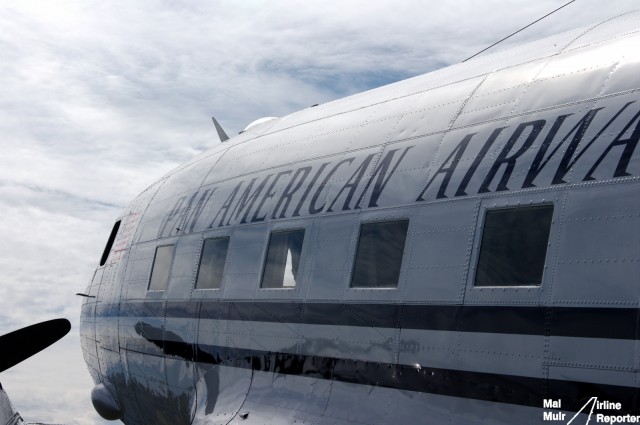
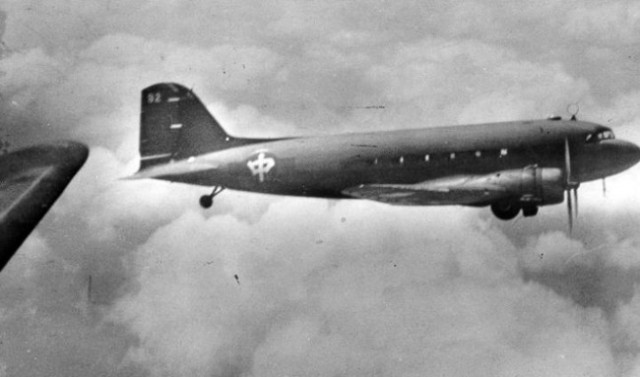
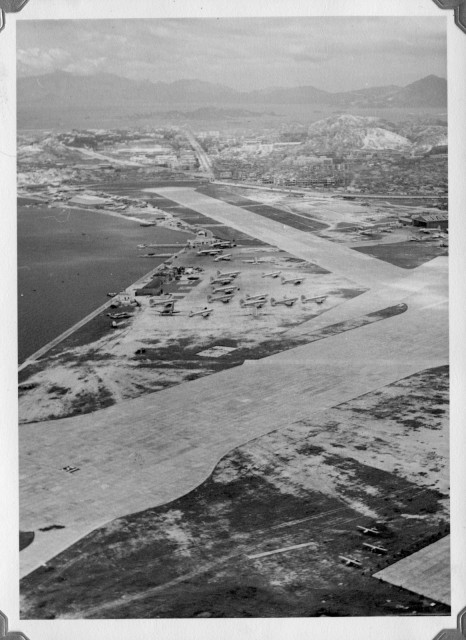
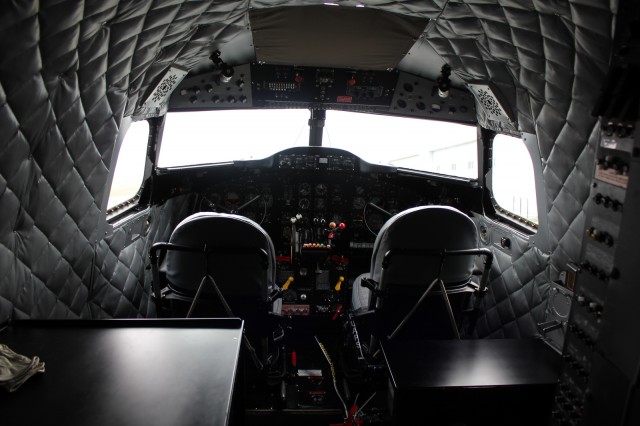
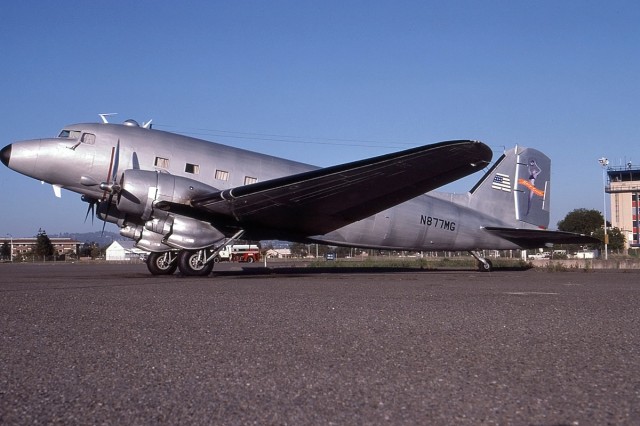
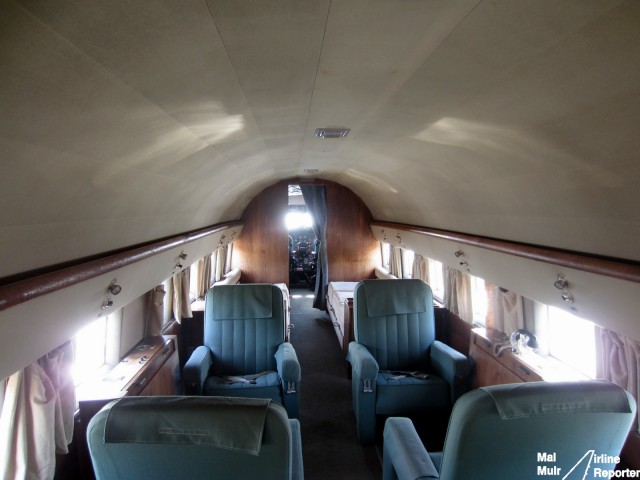
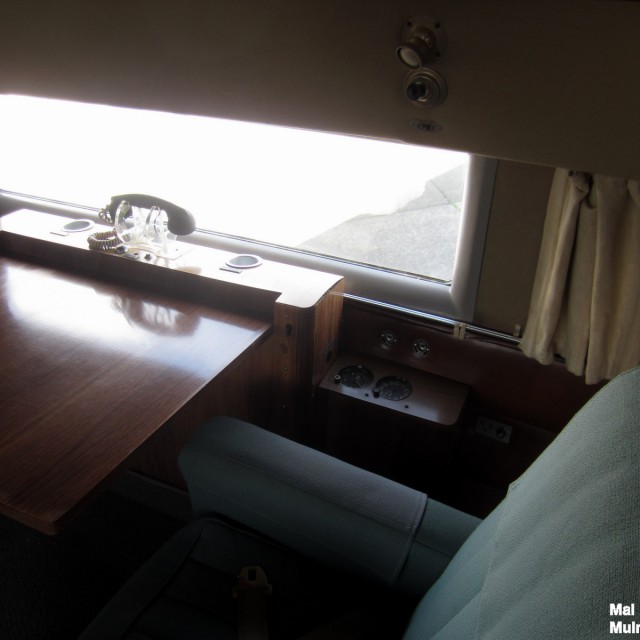
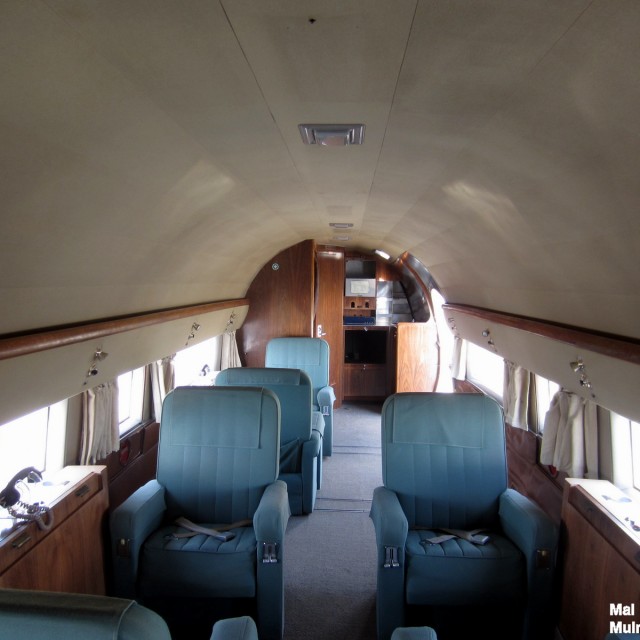
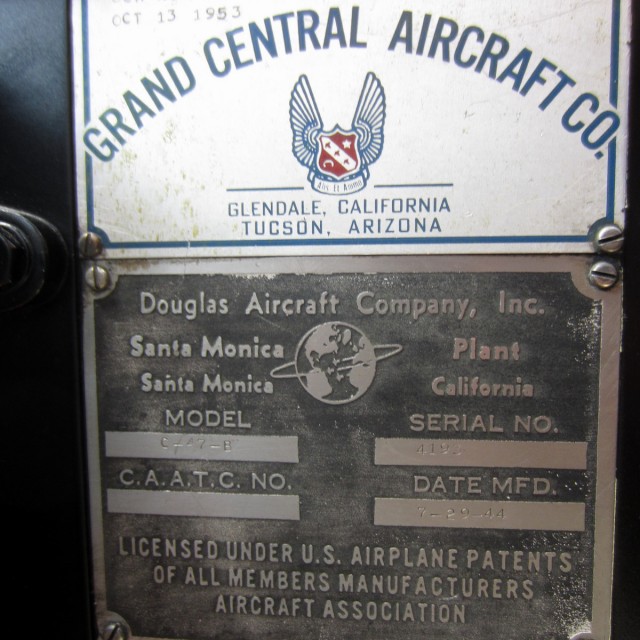
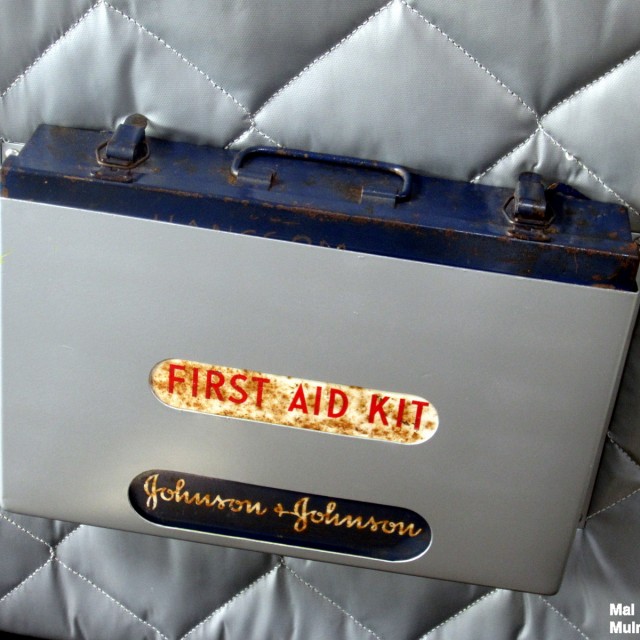
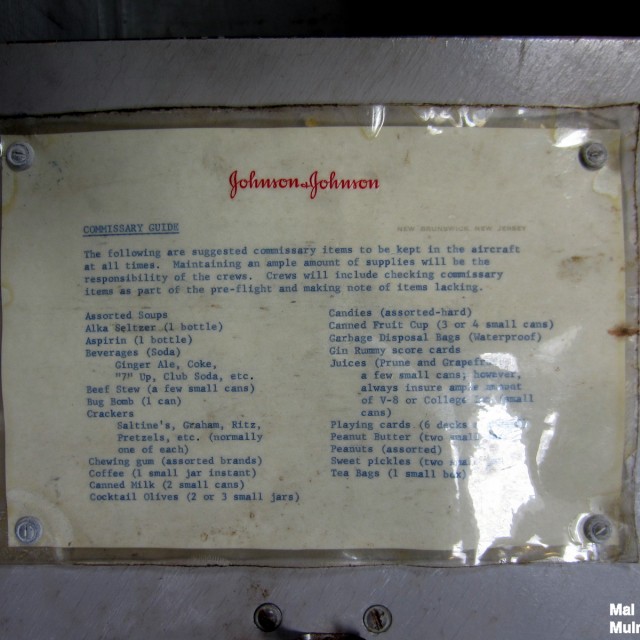
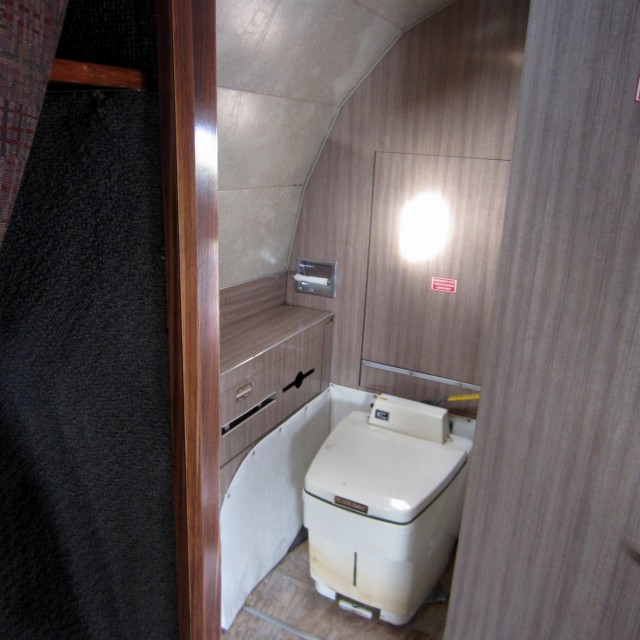

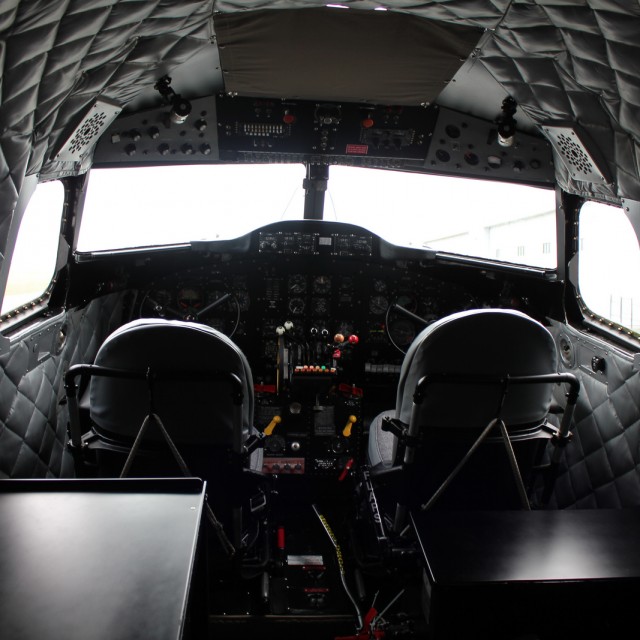
Great article and pictures ! Can you put an “email this article” link on your articles ? My sister’s husband is a pilot and he’d like to see stuff like this.
thx….Tim Mellin….Los Angeles (WSU Coug….1972.)
Random question on the topic of museum DC-3s: There’s the hulk of an old DC-3 off one of the runways at BFI. My understanding is that this one used to be inside the Museum of Flight in AS colors, then in ’97 it was swapped out for a different plane and is now left to rot. Any idea why??
I found the history of this ship particularly interesting as I am a long time J&J employee. (I guess J&J’s execs liked beef stew and needed prune juice…). I passed this along to my Company’s communications group to distribute to all of the J&J community–this would be of great general interest to them.
Steve, thanks so much! Hopefully Johnson & Johnson staff get a kick out of it!
As a former US Army C-47 flight engineer on a C-47H, I logging approximately 2400 hours from July 66 – April 69, I certainly enjoyed flying the C-47. The aircraft now sits at Camp Blanding National Guard camp just outside of Starke, Fl. It is one that was given a lot of extra TLC as I had new heated wind screens, radar, new flooring, a new instrument panel, disk brakes, new pilot seats. Prior to the C-47 position, I spent 3 years flying the Army CV-2B Caribou as flight engineer where I logged approximately 2300 hours. How can someone be so lucky to have the opportunity to fly both aircraft? Your discussion of flying the C-47 from the states to India was also familiar as we departed from Ft. Benning, GA en-route to Viet Nam in 1964. We did fly a better route from Benning to McGuire AFB, Argentia, New Foundland, Azores, Madrid, Athens, Tehran, Karachi, New Delhi, Calcutta, and then to Viet Nam taking 73 hours and 23 days to complete. Enjoyed your article and please keep them coming.
Bob
Thanks Bob for sharing — sounds like you have some pretty amazing stories.
David
As an Australian #avgeek the Caribou holds a special place in my heart. Please tell me they did wheelbarrow landings in the USA like they used to in Australia? One of my first ever Air Show memories was of a demonstration by an RAAF Caribou and them doing the whole length of the runway on the nose wheel.
Thanks Bob for your comment, would love to hear some more stories 😀
Hello Malcom
How are you doing? Just looking at your report on the N877MG which is great…but I saw you used a photo from my website….? is that correct…I don’t mind but it would be nice to mention the source….!!!
With kind regards
Michael S.Prophet
Vintage Aviation Pictures
http://www.michaelprophet.com
Hi Michael
As per above crediting, all photos are either my own or provided to us by the Historic Flight Foundation.
Thx
Mal
Hello Malcolm…thanks for the speedy reply.
I guess then that the Historic Flight Foundation copied the
photo of the N877MG as shown from my website…without a proper request…?
Because I have the original Kodachrome slide dated JUL97
cheers Michael
Long range fuel tanks are mentioned but no specifics. Does anyone know the data on this?